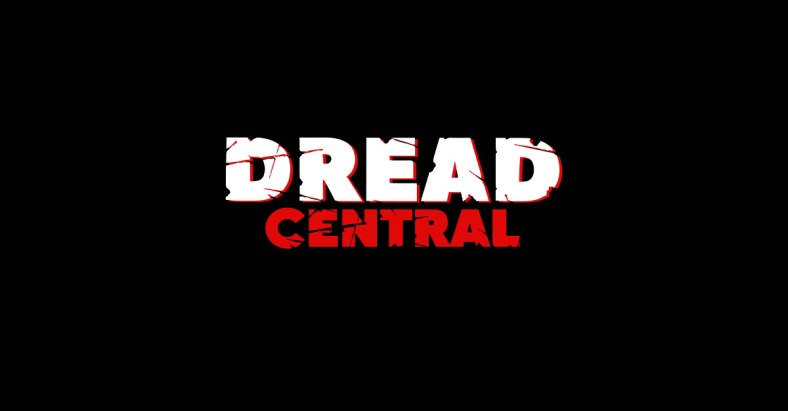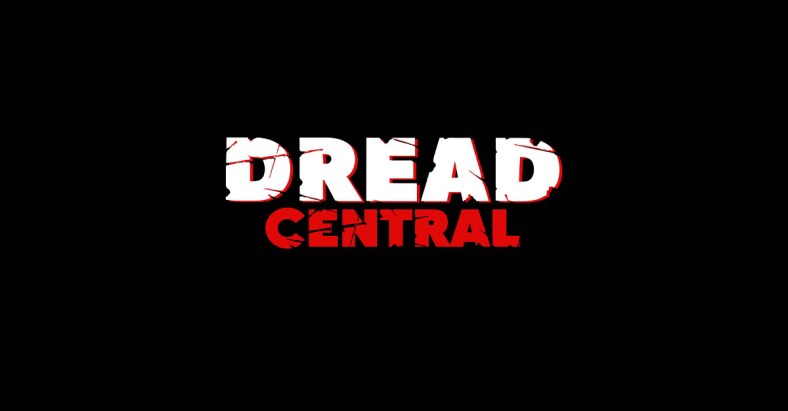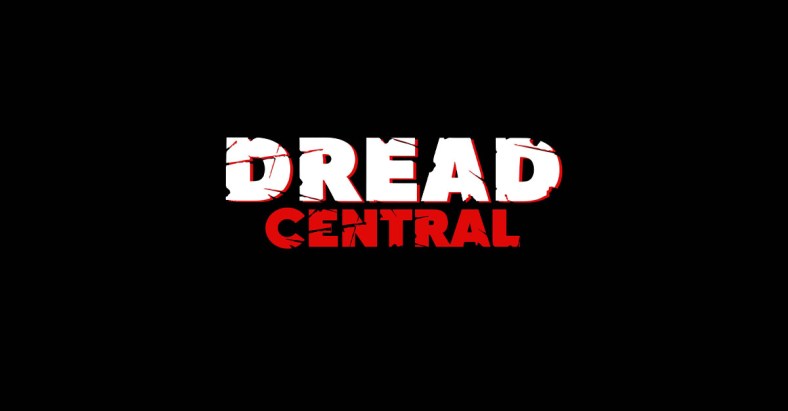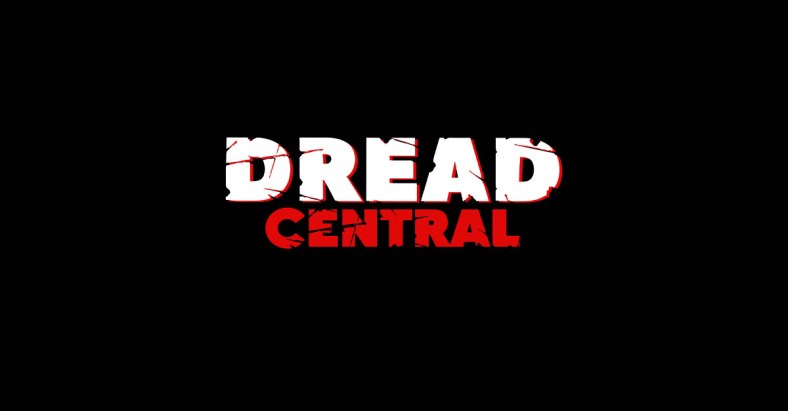Exclusive: Julien Maury Talks Leatherface

Julien Maury makes up one-half of the French directing duo – along with Alexandre Bustillo – who brought us the shocking grand guignol horror film Inside a few years back. Now the filmmakers have returned with Leatherface (review), a prequel to 1974’s The Texas Chain Saw Massacre.
In the story, a violent teen and three others kidnap a young nurse while escaping from a Texas mental institution. Pursued by a vengeful sheriff, the disturbed young man embarks on a murderous rampage that shapes him into a legendary killer known as Leatherface.
We caught up with Maury at a recent press junket where he spilled his guts on the making of the massacre movie.
Dread Central: Taking on such a legacy must have been daunting on some level, but also really cool. What was your experience in making Leatherface?
Julien Maury: Sounds like the typical promo speech but honestly it was a very good experience. Directing in English wasn’t so hard and of course we grew up watching American horror movies, so it was very special for us. It was really like a kid’s dream and especially for this character. This bogeyman movie is not just any bogeyman – it’s the ultimate monster. And so it was a lot of pressure on our shoulders but what hooked us is the fact that we could explore the story. Every other episode of the franchise is built with the same narrative structure. It’s always a bunch of kids getting lost on the land of the degenerate family. But here it was different. It was really much more like a road movie. That was something interesting for us because the main characters were young or a bit older than teenagers and that this was a moment in life that really interested us as directors and also the fact that they are all villains. It’s always a challenge for a director to be able to have the audience relate and identify to the bad guy. So yeah, we were quite excited.
DC: Fans aren’t very interested in the mystique anymore. Moviegoers and TV watchers want prequels and origin stories with everything explained. So, were you brought on when the project was still in development so you could guide the story, or was the script already finished?
JM: The script was finished but we asked for some rewrites and we did it. The script writer Seth Sherwood was really supportive and he was really nice because we wanted to change some stuff. Officially, we didn’t change the structure – the structure stayed the same. We changed some elements, especially about the death sequences. We wanted to bring the script into our universe and we’ve added some twists to moments and the death sequences, we changed almost every death sequence and especially in the end. In the end in the first draft it was like a blood bath and Leatherface was killing at least thirty people with a chainsaw. It was like Brain Dead. And so it was really over the top and even if we like blood and gore, we were like, no, that’s not the character, we cannot do that – so those were the kinds of adjustments we did.
DC: When you world-premiered Leatherface at FrightFest, it was the same weekend Tobe Hooper [the director of the 1974 Texas Chain Saw Massacre] passed away. Did he at least get to see your film at some point?
JM: No. We learnt that he passed away the day before the first screening of Leatherface. So it really was a shock for us and especially because we didn’t have the chance to meet him or even talk to him. His name is on the credits, but it is just contractual and because he created the characters with Kim Henkel. Honestly, it was very disappointing for us, because when we accepted this project, we hoped to meet him and to hear his take on the story and all the sequels and how he felt about that and maybe ask some advice from him. So we were really saddened and disappointed, yes. He’s someone that really changed our lives, as an audience and as a director later. We love his career. We even tried to propose a remake of Funhouse. I remember we had this conversation with an executive from Universal, just saying that we would love to do that movie, being a prequel of the movie and being inspired by the novel by Dean Koontz. I remember the executive at that time said ‘Ah fellows, interesting, I’ve never seen this one.’ And we were like ‘Okay you know it’s in your catalogue and you own the rights.’ He said, ‘Ah really!? Cool!’ (laughs) So it didn’t happen, whatever. But yeah, we were very, very saddened about Tobe’s passing.
DC: As you said, the characters in Leatherface are more than just teen meat for the chainsaw. Do you have a favorite character?
JM: They were all very interesting to bring to life. The character of Jed was very interesting. In the beginning we were having fun with the fact that everyone could be the bad guy – you know, even a girl. Like I said earlier, we always wanted to surprise the audience and to blur the lines. And so that was the first intention, to have all these characters psychopathic and being the ideal suspects. I would say that one of my favorite characters was Clarice. We had to cut some sequences… she was much more than just a pyromaniac. We had these sequences that we cut where she was talking about how her family disappeared and we could see her using fire for the first time since she was an inmate in Gorman Institution, and she was totally fascinated, like a drug, watching the flames dancing.
DC: Your features and shorts always have moment of shock that’s not necessarily a death. Like the tracheotomy scene in Inside. That one stayed with me.
JM: We are very balanced guys (laughs), we are not psychopaths. It’s complicated. The thing is that I am always thinking with Alexandre is how we could surprise the audience because we know the horror genre is a genre where the fan knows all the tricks and it’s very complicated to surprise them. They know all about the scares and how it works, so that’s our challenge for each film to actually try to have a moment where we are taking the audience by the hand and making them believe we are going this way and we are going the other. So that’s kind of the same for this idea of the tracheotomy – it’s the same idea. We are really searching for what is going to make the audience jump on their seats and say ‘what the fuck!’ (laughs).
DC: What’s coming up after Leatherface? Will you ever leave the horror genre?
JM: We’ve got a lot of projects right now, Alex and I. We are working on five different movies here in France. And we have greenlighted three of them – honestly, now is a bit too early to talk about it. If everything goes right, we should be shooting our next movie in spring. Of course. We are not going to do a romantic comedy (laughs).
Stephen Dorff, Lili Taylor, Sam Strike, Sam Coleman, Vanessa Grasse, Nicole Andrews, Julian Kostov, Jessica Madsen, and Lorina Kamburova star. Leatherface was written by up-and-coming genre scribe Seth M. Sherwood.
Millennium Films, which was behind the 2013 Texas Chainsaw 3D, is once again producing with Christa Campbell, Lati Grobman, and Carl Mazzacone for Lionsgate.
Synopsis:
In Texas, years before the events of The Texas Chain Saw Massacre in the early days of the infamous Sawyer family, the youngest child is sentenced to a mental hospital after a suspicious incident leaves the sheriff’s daughter dead. Ten years later, the Sawyer teen kidnaps a young nurse and escapes with three other inmates. Pursued by authorities including the deranged sheriff out to avenge his daughter’s death, Sawyer goes on a violent road trip from hell, molding him into the monster now known as Leatherface.




Categorized: News
